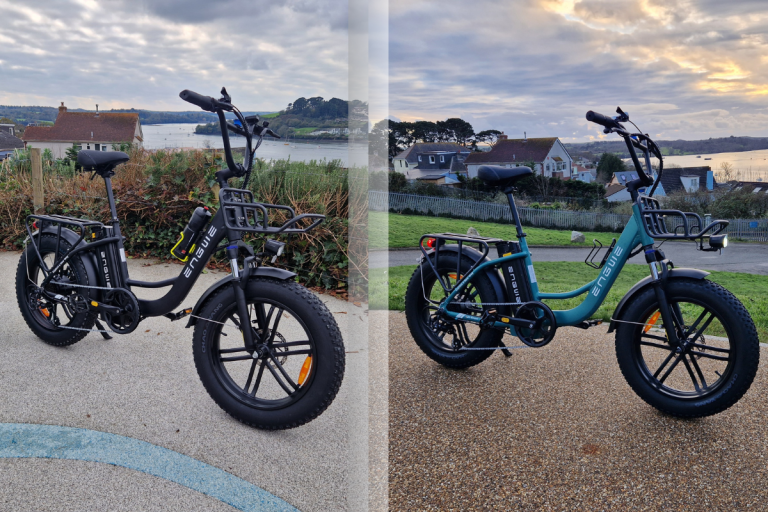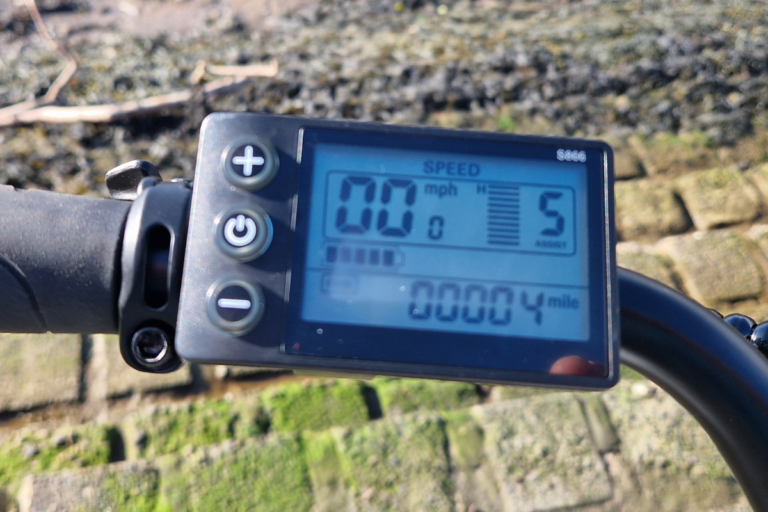11 of the Best Delivery Side Hustles in the UK (2025)
Whether you’re looking to boost your income or find a way to make the most of your spare time, delivery side hustles have become a popular way to earn extra cash in the UK. With flexible hours and the chance to work as much or as little as you like, it’s no wonder lots of people are signing up. But with so many options out there, which delivery job is right for you? Here’s a rundown of the best delivery side hustles in 2025 to help you decide.
1. Amazon Flex
Amazon Flex is one of the most popular delivery jobs in the UK, offering flexibility and competitive pay for those with a car. The concept is simple: you use a car or small van to deliver parcels in pre-scheduled blocks, typically lasting three to four hours. The app handles everything, assigning you a route, showing you where to go, and providing details about the deliveries.
Pay is advertised at £13–£18 per hour, which can make it a great earner for part-time work. However, your actual take-home pay depends on a few things, such as how far you need to drive, the number of parcels on your route, and your vehicle costs like fuel, maintenance, and insurance. For example, routes in rural areas often involve longer distances between stops, meaning higher fuel consumption but less physical effort, while city centre routes can have you struggling with parking and tight schedules.
Pros:
- Flexible schedule: You can choose when and where you work by picking up blocks on the app.
- No boss: You’re in control, with no one micromanaging your shifts.
- Reliable payment: Amazon pays consistently, and you know what you’ll earn for a block before you accept it.
Cons:
- High vehicle running costs: Fuel, “hire and reward” insurance and wear-and-tear costs can add up quickly.
- Tricky city centre deliveries: Narrow streets, lack of parking, and busy traffic can make some routes frustrating.
- Limited availability of blocks: Depending on your location, it can be competitive to grab shifts during busy periods.
Best For:
Amazon Flex is ideal for people with a reliable car who want flexible, app-based work without committing to regular hours. It’s especially suited to those in suburban or rural areas, where parking and delivery routes tend to be easier.
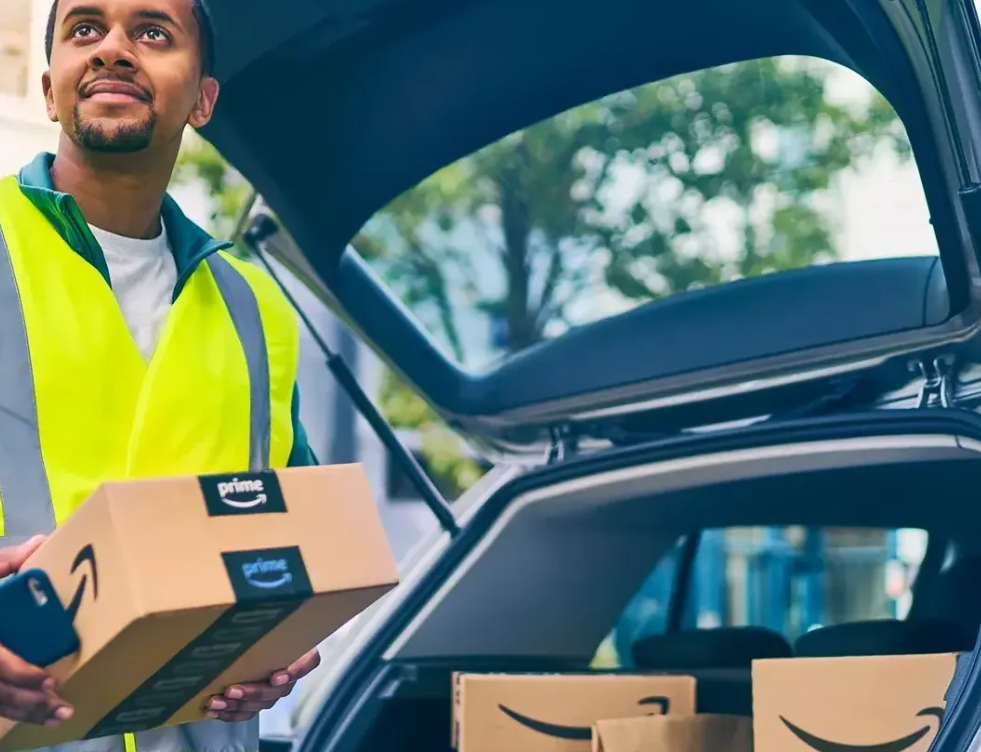
2. Evri
Evri, formerly known as Hermes, is a strong choice for people looking for steady parcel delivery work. Unlike app-based gig jobs, Evri often assigns drivers the same routes daily, offering more consistency than platforms like Amazon Flex. As a courier, you’ll collect parcels from your local depot and deliver them within a specific area, usually within a manageable radius of your home.
Pay is typically based on the number of parcels delivered, making busy periods like Christmas especially lucrative. However, Evri parcels don’t have the same level of uniformity as Amazon packages. Many items come from home sellers using platforms like eBay and Vinted, so you’ll encounter a wide range of packaging styles—from neatly boxed items to awkwardly wrapped bundles. Identifying parcels can also be tricky, as some marked as “portable” may still be too large to fit through a letterbox.
Pros:
- Predictable routes: Regularly delivering in the same area means you get to know your route well, which can make the job faster over time.
- Steady income: The consistent workload is ideal for people who prefer a more reliable schedule over gig-based unpredictability.
- Local focus: Most routes are within a small area, meaning you won’t spend as much time driving long distances.
Cons:
- Commitment required: Evri often requires drivers to stick to regular schedules, which reduces the flexibility compared to other platforms.
- Heavy workloads: During peak seasons, like Black Friday or Christmas, parcel volumes can become overwhelming, leading to longer hours and physical strain.
- Packaging challenges: The wide variety of packaging, especially from home sellers, can make some parcels difficult to handle or deliver.
Best For:
Evri is a great option for drivers who want predictable routes and steady income rather than gig-based flexibility. It’s particularly suited for people who enjoy working close to home and don’t mind the physical demands of parcel delivery.
3. Deliveroo
Deliveroo is one of the most popular food delivery platforms in the UK, offering riders the chance to deliver meals from restaurants and groceries from local shops. With options to use a bike, e-bike, scooter, or car, it’s accessible to just about anyone, no matter what transport you have.
Pay varies depending on factors like the time of day, the distance of the delivery, and how busy the app is. Deliveries during peak meal times—like lunch and dinner—tend to pay the most, and riders often earn additional tips from generous customers. However, the pay can drop significantly during quiet times, making it a job where timing is everything.
Pros:
- Flexible hours: You can log in and start delivering whenever you want, with no shifts to commit to.
- High demand during meal times: Peak hours often mean plenty of orders to keep you busy.
- Tips: Riders can earn a decent amount from tips, especially in areas with frequent high-value restaurant orders.
Cons:
- Unpredictable earnings: Outside of peak hours, orders can dry up, leaving you with little to do.
- Weather challenges: Delivering in the rain, wind, or cold is no fun, especially if you’re on a bike.
- Physical strain: Cycling or riding for hours can take a toll, especially in hilly or busy areas.
Best For:
Deliveroo is perfect for riders in busy urban areas with lots of restaurants and shops nearby. It’s particularly well-suited to those with a bike or e-bike who want flexible work and don’t mind a bit of physical effort.
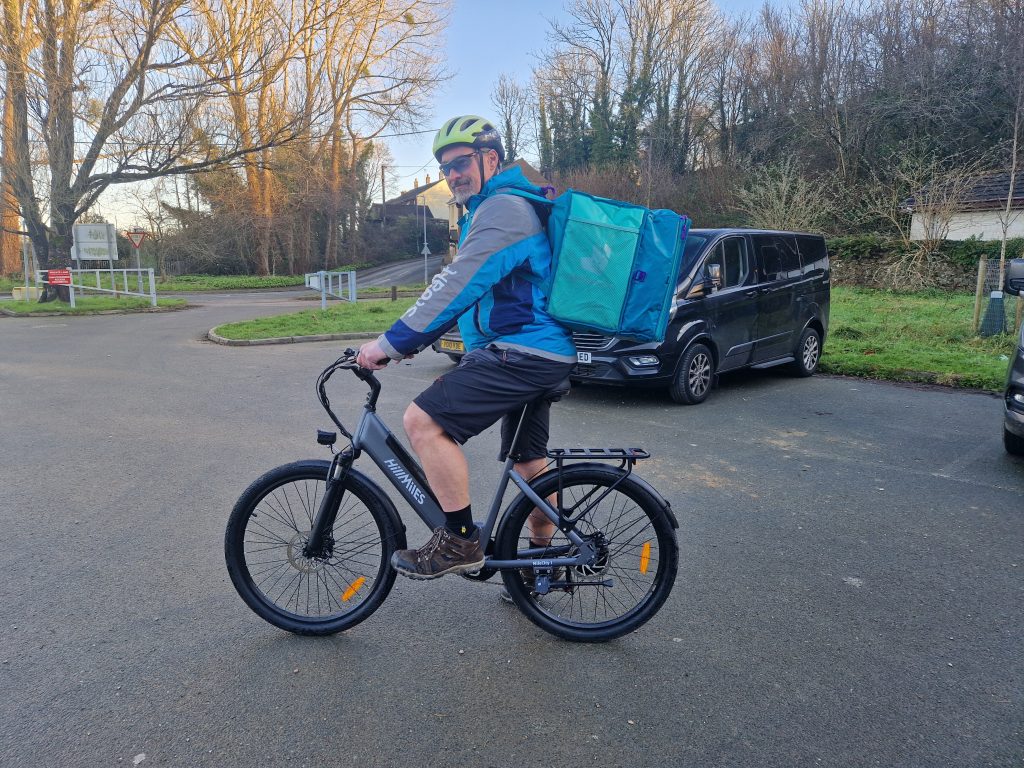
4. Stuart
Stuart Delivery is a platform that connects couriers with a mix of delivery jobs, including groceries for Tesco Whoosh, takeaway orders for restaurants like Papa John’s. The variety of work keeps things from becoming too repetitive, making Stuart a good option for couriers who prefer a blend of grocery and hot food deliveries.
You can use a bike, e-bike, scooter, or car, and shifts are entirely flexible—log in and work whenever it suits you. On average, you can earn around £12 per hour, but pay can go as high as £20 during busy weekends or peak times. That said, some jobs, particularly grocery deliveries, can involve heavy loads, and long-distance jobs can occasionally crop up, cutting into your earnings if they take too much time.
Pros:
- Variety of deliveries: From groceries to clothing, you’ll get a mix of jobs that keep things fresh.
- Flexibility: You can work whenever you want without committing to set shifts.
- Decent earnings potential: Pay spikes during busy periods, especially on weekends.
Cons:
- Heavy orders: Grocery deliveries can be physically demanding, with some loads being bulky or weighing up to 20kg.
- Long-distance jobs: Occasionally, deliveries can send you further than expected, reducing your earnings per hour.
- Weather and terrain: Like other delivery jobs, bad weather and hilly routes can make the work harder, especially if you’re on a bike or e-bike.
Best For:
Stuart is ideal for people who want a mix of grocery and general delivery jobs, appreciate variety, and value the flexibility to work when it suits them. It’s particularly good for riders with a bike, e-bike, or scooter in areas with a mix of shops and restaurants.

5. Just Eat
Just Eat is one of the UK’s leading food delivery platforms, offering a different structure compared to gig-based apps like Deliveroo or Uber Eats. Instead of logging in whenever you want, Just Eat operates on scheduled shifts, which gives riders more predictable work. When you sign up, you’re assigned shifts in advance, meaning you’re guaranteed jobs within that time, even during quieter periods.
Most Just Eat riders use bikes, scooters, or mopeds, though in some areas, you can use a car. Pay rates vary depending on the area and time of day, but the stability of having set shifts is a major advantage for those who prefer reliable income over complete flexibility.
Pros:
- Predictable shifts: Knowing when you’re working and having guaranteed jobs within your shift removes the uncertainty of gig work.
- Steady income: Even during quieter periods, you’ll still have work, which makes earnings more consistent.
- Less competition for jobs: Shifts are assigned, so you’re not competing with other riders for deliveries.
Cons:
- Less flexibility: You have to commit to shifts in advance, which means you lose the “work whenever you want” appeal of apps like Uber Eats or Deliveroo.
- Limited availability: In some areas, shifts may be hard to come by, especially during off-peak times.
Best For:
Just Eat is a great option for riders who prefer structured work with predictable income and don’t mind giving up some flexibility to secure regular shifts.
6. Uber Eats
Uber Eats offers maximum flexibility, letting you log in and work whenever you want. There’s no need to commit to shifts or schedules, making it a popular choice for people who want complete control over their work hours. The app works on an on-demand basis, so you grab jobs as they pop up.
Busy times, such as evenings and weekends, are when you’re most likely to maximise your earnings, especially if you’re in a densely populated area with lots of restaurants. However, during quieter periods, jobs can be few and far between, and the pay for long-distance deliveries might not be worth the effort.
Pros:
- Ultimate flexibility: Log in and work whenever you want, with no need to book shifts in advance.
- Wide availability: Operates in most areas across the UK.
- Great for short bursts: Ideal if you only want to work for an hour or two during peak times.
Cons:
- Unpredictable earnings: In quieter areas or off-peak times, it can be harder to find consistent work.
- Long-distance jobs: Some deliveries might involve lengthy trips, reducing your hourly earnings if the pay doesn’t cover the time and fuel costs.
Best For:
Uber Eats is perfect for riders who value maximum flexibility and want the freedom to work whenever and wherever they choose, especially in busy cities with high demand.
8. Yodel
Yodel is a parcel delivery service that focuses on local neighbourhoods, offering a more structured alternative to gig-based delivery platforms. As a Yodel courier, you can sign up for permanent part-time routes or choose ad-hoc deliveries. Routes are typically assigned by your local depot, and you’ll work within a specific area, delivering parcels to homes and businesses.
Pay is generally per parcel, and Yodel’s local focus means less driving between stops compared to platforms like Amazon Flex. The structure is more rigid, which some drivers prefer, but it also means less freedom to pick and choose when you work.
Pros:
- Local routes: You’ll work within a set area, which keeps fuel costs lower and makes routes more efficient.
- Steady work: Routes are assigned, so you can count on consistent earnings.
- Good for regular income: A more structured approach appeals to those who prefer reliability over gig-style flexibility.
Cons:
- Less flexibility: You have to stick to assigned routes and schedules, which might not suit everyone.
- Physically demanding: Delivering parcels, especially during busy periods like Christmas, can involve heavy lifting and long hours.
Best For:
Yodel is ideal for drivers who want reliable, local delivery work and don’t mind giving up some flexibility in exchange for steady income and predictable routes.

9. Gophr
Gophr is a courier service that caters to a wide range of delivery needs, from small parcels to bulky or specialised items. Unlike food delivery apps, Gophr focuses on courier work for businesses and individuals, making it a great option for those looking for variety in their deliveries.
Jobs are assigned based on your vehicle, so whether you’re on a bike, e-bike, scooter, car, or van, there’s work to suit your transport. For riders and drivers with larger vehicles, Gophr is especially appealing as it offers higher-paying jobs for larger or time-sensitive deliveries. This makes it a solid choice if you’re looking for something different from the standard food or parcel delivery gigs.
Pros:
- Higher pay for specialised jobs: Deliveries that require specific vehicle types or involve larger or urgent items often come with higher pay rates.
- Variety of deliveries: From small documents to larger parcels, the range of jobs keeps things interesting.
- Less physical strain for drivers: If you’re in a car or van, you’ll handle heavier items with less effort compared to bike couriers.
Cons:
- Less predictable work: Gophr doesn’t always guarantee a consistent flow of jobs, so earnings can vary.
- Potential downtime: In quieter areas or during off-peak times, you might find yourself waiting for the next job.
- Larger vehicles needed for some jobs: While smaller vehicles like bikes and e-bikes can handle many deliveries, the more lucrative jobs often require a car or van.
Best For:
Gophr is ideal for couriers with larger vehicles who want to take on higher-paying jobs or those looking for a more diverse range of delivery types. It’s also a good fit for anyone who enjoys the variety of working with a mix of clients and items.
10. Relay Delivery
Relay Tech is an up-and-coming delivery platform in the UK that’s worth keeping an eye on, particularly if you’re based in London or the Northwest of England (Liverpool, Manchester, and surrounding areas). Unlike traditional gig apps that assign individual jobs one by one, Relay works on a block-based system similar to Amazon Flex. Drivers collect a batch of parcels from a local shop, called a “Pitstop,” and deliver them to multiple destinations, usually within a single neighbourhood or nearby area.
The number of drops per block can range from 30 to 40, but anecdotal reports suggest the rate of pay is higher than many other delivery platforms, making it an attractive option for those who want to maximise their earnings. Relay’s app is also praised for being user-friendly, which can make the job less stressful, especially for new drivers.
Pros:
- Competitive pay: Drivers report higher earnings compared to other parcel delivery platforms.
- Efficient blocks: Delivering multiple parcels within a block helps reduce downtime between jobs.
- User-friendly app: The intuitive design makes planning and navigating routes easier.
Cons:
- Limited availability: Currently only operating in London and parts of the Northwest, so not yet an option for most of the UK.
- High parcel volume per block: While efficient, handling 30–40 drops can be physically demanding.
Best For:
Relay is ideal for drivers in London or the Northwest who want to earn more through parcel delivery, especially those who are comfortable with handling multiple deliveries in a single shift. As Relay continues to roll out across the UK, it could become a great side hustle for more drivers looking to earn extra cash through parcel deliveries.

11. DPD Connect
DPD Connect is a relatively new offering from DPD Local franchisees, designed to handle smaller parcels and ease the workload on traditional DPD routes. Unlike fully flexible gig apps like Amazon Flex, DPD Connect operates on a pre-scheduled basis. Drivers commit to routes a week in advance, typically working Tuesday to Saturday, although there is some flexibility if you notify the depot manager ahead of time.
Drivers collect pre-sorted bags from local micro-depots — often storage units rather than large hubs — and are responsible for scanning and manually organising parcels before heading out. Most deliveries require an in-person handover, where you must capture a photo and input the recipient’s full name, making the process more time-consuming than simple doorstep drops.
The Saturn app used for deliveries isn’t as slick as Amazon’s, but once you get used to the workflow, the pay is competitive, with drivers earning £1 per successful stop. Routes are tightly grouped, often within a suburb or small town, meaning lower mileage and less fuel expense compared to nationwide gig platforms.
Pros:
- Decent pay-per-stop: £1 per completed delivery, with low mileage routes, can add up quickly.
- Tight delivery zones: Most routes are in small, concentrated areas, reducing driving time.
- Consistent work: Scheduled routes provide more stability compared to on-demand gig apps.
Cons:
- Less flexibility: Drivers must commit to routes a week in advance, with less day-to-day freedom.
- Workflow-heavy: Deliveries often require customer interaction, and the app feels outdated compared to other platforms.
- Unpaid loading time: You’ll spend 30–45 minutes loading and sorting, which isn’t compensated separately.
Best For:
Drivers who want steady, local parcel delivery work with predictable earnings and don’t mind a more structured routine compared to casual gig apps like Amazon Flex or Evri.
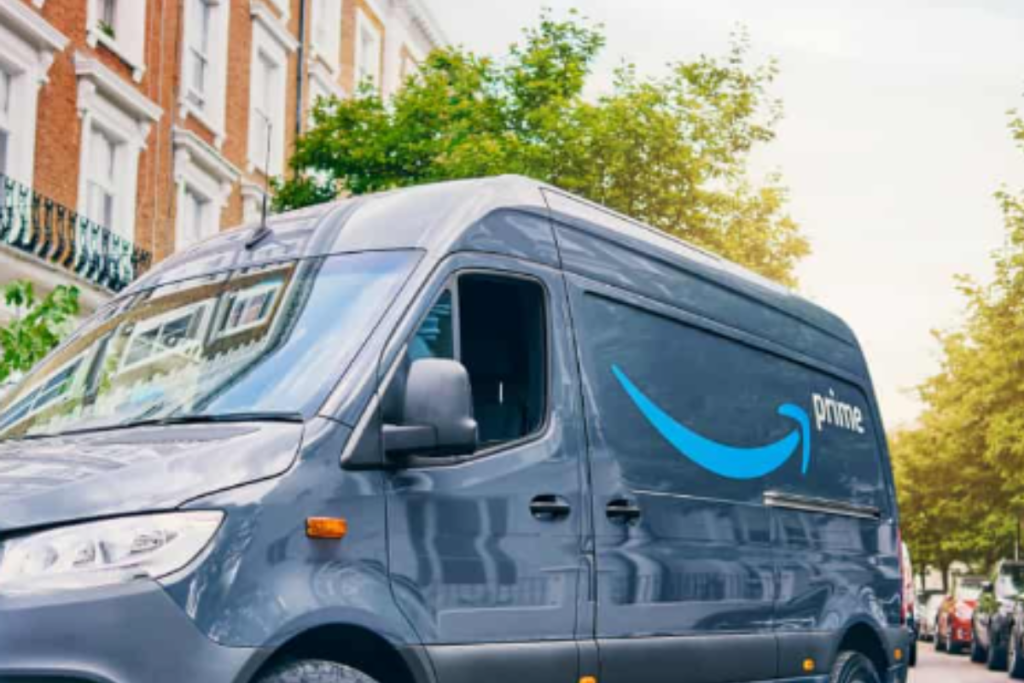
Other Options to Consider
Amazon DSP Delivery Driving
Amazon Delivery Service Partner (DSP) driving is a step up from gig-based roles like Amazon Flex. While the job offers less flexibility than gig work, it’s a great option for those seeking a steady income without the uncertainty of gig platforms.
- Best For: Drivers who want structured shifts with consistent work.
CitySprint
CitySprint is a good choice for those who enjoy courier work, handling everything from urgent documents to larger parcels. Same-day delivery is their speciality, and jobs are often assigned based on your vehicle type, so having a van can open up higher-paying opportunities. Pay is competitive, particularly for time-sensitive deliveries, but job availability can vary depending on your location.
- Best For: Couriers with a car or van who want variety and don’t mind longer-distance driving and the fast-paced nature of same-day delivery.
Delivery App
The Delivery App is another option for drivers and riders looking for courier or parcel delivery jobs. This platform offers flexibility with no fixed shifts, and you can use a variety of transport methods, including bikes, scooters, and cars. Similar to Gophr, it provides access to a range of deliveries, from small items to larger loads, and is particularly appealing to those seeking higher-paying courier work in busy cities.
- Best For: Drivers and riders who prefer diverse delivery tasks and want a flexible, app-based platform without strict schedules.
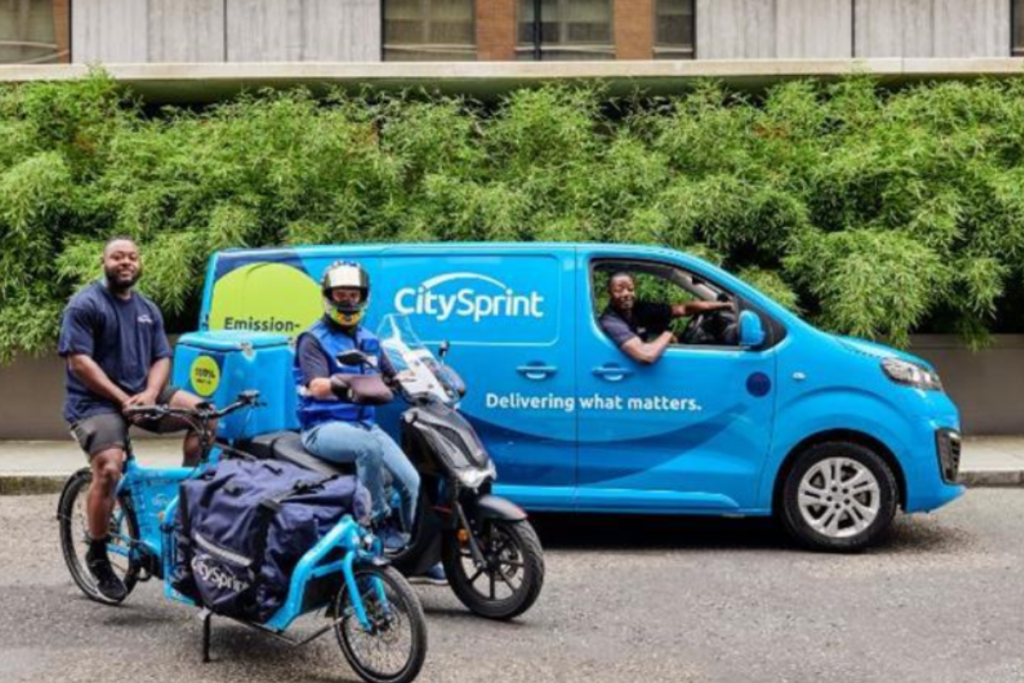
How to Choose the Right Delivery Job
When deciding which delivery side hustle to go for, consider the following:
- Your Vehicle: If you’ve got a car, Amazon Flex or Yodel might be better options. If you’re on a bicycle or e-bike, Deliveroo or Stuart is a great fit.
- Your Schedule: For complete flexibility, apps like Deliveroo, Uber Eats, and Stuart are ideal. For more regular work, Amazon Flex, Evri or Just Eat might be better.
- Your Area: Large towns or cities are better for food delivery apps due to short distances and high demand, while smaller towns may have lower demand.
- Your Goals: If you want quick cash with no commitment, stick with on-demand apps. If you’re looking for a steady income, go for structured options like Yodel or Evri.
Final Thoughts
Delivery side hustles in 2025 offer something for everyone, whether you’re after a bit of extra cash or a more regular income. With so many apps and platforms out there, it’s worth signing up for a few to see which works best for you. Just remember to plan your time wisely, avoid taking on jobs for multiple apps at once, and factor in running costs before diving in.




